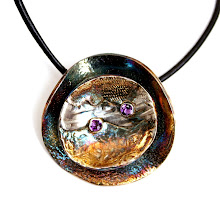
Akoya
Akoya is what we generally think of when someone talks about pearls. They speak of a white round gem. Akoya oysters are the main ones used for saltwear pearl culturing in both China and Japan. Most are cream or white and some have a tint of rose or green. The oyster itself is relatively small so it doesn’t produce a cultured pearl larger than 11 mm. What we see as the traditional strand of pearls are generally an Akoya pearls. They lend themselves to matching very well.
Akoya pearls were the first round or spherical cultured pearl and were introduced in the twentieth century. Japan and China are the primary sources for Akoya pearls but there are other areas that grow them including Korea, Southeast Asia, Australia the Persian Gulf and the Caribbean. In the 1940’s pearls were not readily available in all sizes for strands. Because of this graduated strands of cultured pearls were strung. Almost all necklaces before and immediately after World War II were graduated necklaces. U.S. servicemen brought home many of these necklaces for their moms, girlfriends and wives. This helped to create a demand and knowledge of the cultured pearl.
The Japanese growth period for Akoya pearls is 8 months to 2 years. Farmers will harvest Akoya pearls in the winter. The water is the coldest then and it will lead to a better cultured pearl quality. The longer the pearl grows generally the better the pearl.
The size of Akoyas are relatively small. They are available in sizes 2 to 11 mm in diameter but a 10 mm Akoya is very rare. The average size of an Akoya is 6 to 7 mm.
Most Akoya pearls are sold as strands and they are very well matched. A very high amount of pearls will receive an excellent rating in matching. This happens because a very high amount of Akoyas are round or near round. If all other value features are equal in an Akoya their value will raise as their size gets larger.
Akoya is what we generally think of when someone talks about pearls. They speak of a white round gem. Akoya oysters are the main ones used for saltwear pearl culturing in both China and Japan. Most are cream or white and some have a tint of rose or green. The oyster itself is relatively small so it doesn’t produce a cultured pearl larger than 11 mm. What we see as the traditional strand of pearls are generally an Akoya pearls. They lend themselves to matching very well.
Akoya pearls were the first round or spherical cultured pearl and were introduced in the twentieth century. Japan and China are the primary sources for Akoya pearls but there are other areas that grow them including Korea, Southeast Asia, Australia the Persian Gulf and the Caribbean. In the 1940’s pearls were not readily available in all sizes for strands. Because of this graduated strands of cultured pearls were strung. Almost all necklaces before and immediately after World War II were graduated necklaces. U.S. servicemen brought home many of these necklaces for their moms, girlfriends and wives. This helped to create a demand and knowledge of the cultured pearl.
The Japanese growth period for Akoya pearls is 8 months to 2 years. Farmers will harvest Akoya pearls in the winter. The water is the coldest then and it will lead to a better cultured pearl quality. The longer the pearl grows generally the better the pearl.
The size of Akoyas are relatively small. They are available in sizes 2 to 11 mm in diameter but a 10 mm Akoya is very rare. The average size of an Akoya is 6 to 7 mm.
Most Akoya pearls are sold as strands and they are very well matched. A very high amount of pearls will receive an excellent rating in matching. This happens because a very high amount of Akoyas are round or near round. If all other value features are equal in an Akoya their value will raise as their size gets larger.


